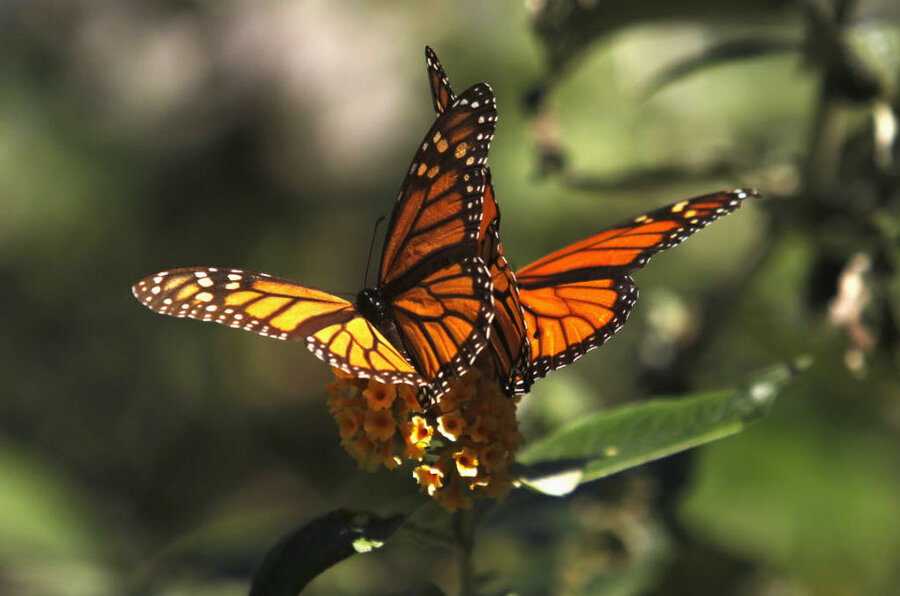Monarch butterfly may join endangered species list in 2015
Loading...
After decades of decline and international conservation efforts, the monarch butterfly may receive new protections in the new year.
The US Fish and Wildlife Service is considering increasing protections for the majestic butterfly under the Endangered Species Act. Monarch populations have declined by 90 percent in the past 20 years, according to conservationists at the Center for Biological Diversity.
The Wildlife Service has had its sights on protecting the iconic orange and black butterflies since 1995. Efforts have included international partnerships and farmer-training programs. But so far the butterfly has not been officially placed on the endangered species list.
International conservation efforts also have been going on for about two decades.
In 1996, the Mexican government established a Monarch Butterfly Biosphere Reserve to protect the forested mountain area where millions of monarchs – so many, the trees are covered in fluttering orange and black – spend their winters.
In February, President Obama entered into an agreement with President Peña Nieto of Mexico and Prime Minister Harper of Canada to coordinate efforts to preserve the monarch’s habitat throughout North America.
The monarch is best known for its staggering 2,000- to 3,000-mile migration from as far north as southern Canada to its wintering grounds in Mexico. The entire journey is fraught with dangers, from hungry birds to severe weather. The marathon migration has become even more perilous in recent years as deforestation, agricultural expansion, illegal logging, and increased development have taken a toll on the availability of milkweed, the only plant capable of sustaining monarch larvae.
Single individuals make the entire trek from Canada to Mexico, thanks to an intriguing generation-specific genetic variation. However, it takes several generations to complete the return trip northward. Without milkweed to lay eggs, subsequent generations cannot be born to traverse the next leg of the journey.
Conservation advocacy groups have launched several campaigns encouraging property owners, farmers, and gardeners to plant milkweed. Organizations such as the Live Monarch Foundation in Boca Raton, Fla., and Monarch Watch at the University of Kansas will send interested land owners free milkweed seeds and plugs in hopes of helping to restore the availability of these vital nursery plants for migrating butterflies.
The Wildlife Service’s consideration of adding the monarch to the endangered species list comes in response to a petition filed by the Center for Biological diversity in Tucson, Ariz.; the Center for Food Safety in Washington, D.C.; and The Xerces Society for Invertebrate Conservation in Portland, Ore.
These groups blame the butterfly's decline, in part, on the widespread adoption of crops genetically engineered to be resistant to Monsanto’s Roundup herbicide. The rise of so-called Roundup Ready crops have led to indiscriminate use of the herbicide, which is a potent killer of milkweed, according to the Center for Biological Diversity.
The Wildlife Service will make a decision regarding the status of the monarch butterfly following a 60-day public information period.








